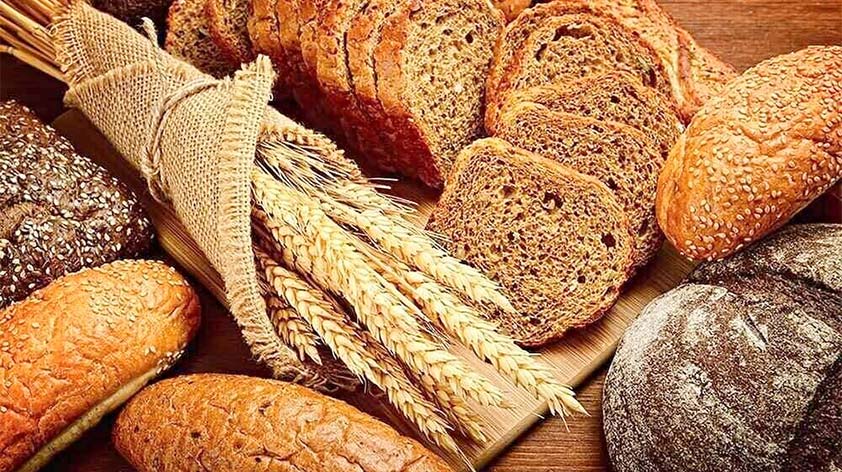
It has been proven that a healthier diet will include less refined wheat or refined white bread. Many healthy diets will mention either whole wheat or whole grain as a replacement in any baked goods. If you’re curious about these two, read on for Whole Wheat vs. Whole Grain: Which is Healthier?
What is Whole Grain and Whole Wheat?
The difference between whole grain and whole wheat is quite simple. Whole wheat is only made with wheat, whereas whole grain can refer to any whole grain. Grains that fall into the category include:
- Amaranth
- Barley
- Brown rice and wild rice
- Quinoa
- Spelt
- Wheat
- Buckwheat
- Oats
- Corn
- Sorghum
- Bulgar
In order to produce flour from grains, they need to be processed. White flours have the outer hull removed as well as the germ; they consist of just the endosperm – also known as the starchy carbohydrate. Whole grains include every part of the original grain.
Did you know? Some people that suffer from wheat allergies and mild gluten intolerance can eat sourdough products made with spelt flour.
The Benefits of Whole Grain
Whole grain foods contain a lot more fiber than processed and refined grains. The nutritious outer layer of the grain contains vital vitamins and minerals such as iron, magnesium, manganese, phosphorus, various B vitamins, and selenium. They are rich in dietary fiber, which has a host of health benefits. They are minimally processed, meaning they are able to help people lose weight or control their weight.
Some of the additional benefits of including whole grain foods in your diet are:
- Lowered risk of chronic diseases such as heart disease, cancer, and type two diabetes. The antioxidants and vitamins all contribute to a lowered risk of heart disease.
- Reduced risk of stroke as it contains antioxidants, fiber, and vitamin K.
- Lowered risk of obesity – whole grains and whole wheat foods are all rich in fiber. They are also less processed and more filling.
- Lowered risk of blood sugar-related health problems, the fiber and low GI of whole grains can help control blood sugar-related diseases by slowly breaking the sugars down. Whole grain foods will not spike blood sugar levels.
It is clear that eating whole grains and including them in your diet will offer you numerous health benefits.
Which is Healthier?
Whole wheat is the whole wheat grain; it is the healthier option when it comes to wheat-based flour. You can use it to make bread, pasta, and muffins. It has fewer calories than white flour and keeps you fuller for longer. Whole wheat contains gluten and is not suitable for celiacs.
Whole grains can refer to any grain available. Whole grains tend to be healthier than just plain whole wheat. Whole grain products often contain a combination of grains; there are some factors to remember when it comes to whole grains. Some whole grain products can contain gluten and more calories. They tend to be more filling, and as a result, you’ll likely eat less whilst benefitting from added nutrients.
Remember to check the ingredient list for any added sugars and for which grains are added to the products. Grains such as buckwheat, rice, oats, and amaranth are normally safe for people with celiac disease or anyone who suffers from IBS. Be careful and seek medical advice if you suffer from any gut problems before adding additional fiber-rich foods to your diet.
How to Include it in Your Diet?
There are many ways to include whole grains in your diet; it could be as simple as making a few quick changes.
- Brown rice and wild rice instead of white rice – Ordinary white rice can be processed and lack nutrients. Choosing healthy brown rice can keep you fuller for longer. The best kinds of white rice are jasmine or basmati as they aren’t as processed.
- Skip whole wheat bread and go for whole grain – whole wheat is healthier than white bread; however, whole grain bread has more nutrients and can keep you fuller for longer.
- Pasta – Grab your pasta maker and make your own whole wheat pasta; whole wheat pasta is a little firmer than traditional refined flour pasta. It is, however, tastier and a lot healthier.
- Overnight Oats – Skip using instant or quick cook oats; swap them out for whole rolled oats. Breakfast dishes such as overnight oats and baked oats make for an excellent, and healthy breakfast.
- Use whole wheat flour to make pies and other baked goods.
Whole grains and whole wheat both have their place in the pantry. Whether you are an avid baker or on a health kick, the data says that including whole grains is an easy way to eat healthier. What do you think about this topic? Let us know in the comments below and join in the conversation on Facebook, Twitter & Instagram!









